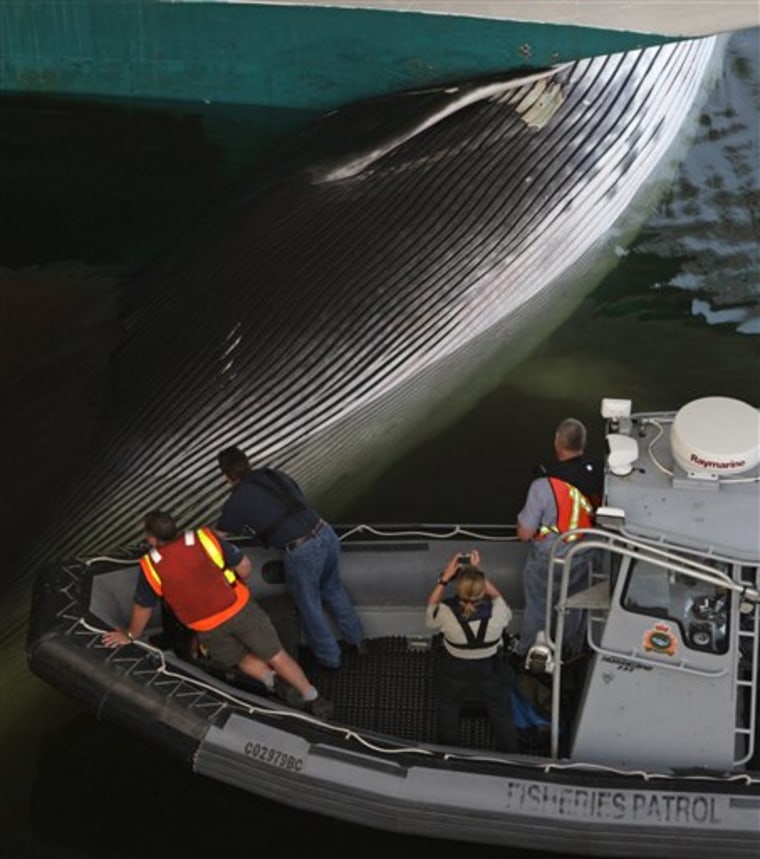It wasn't a pretty sight, but whale watchers on a cruise ship in Canada got more than they bargained for when they arrived at the port of Vancouver — a dead whale stuck to the bow.
The vessel apparently struck the 70-ton fin whale in the ocean and unknowingly carried it wedged to the bow from Alaskan waters to the Canadian port. The adult whale was an estimated 70 feet long.
The Princess Cruise Lines' Sapphire Princess was docked at the Canada Place terminal Saturday with the whale stuck to it.
"Basically like a train coming through, it just hits them. That bow is kind of like a spear. And once they're hit by it, it probably breaks their back, kills them almost instantly," Craig Delahunt of Tymac Launch Service told AP Television News.
Delahunt, who has worked at Vancouver harbor for 20 years, said it was the third such ship-whale impalement he has seen. The skeleton from the last whale carcass is now displayed in a museum in Telegraph Cove, north of the city, he said.
Meanwhile, Princess Cruise Lines said the collision remains a mystery.
"It is unknown how or when this could have happened, as we have strict whale avoidance procedures in place when our ships are in the vicinity of marine life," the cruise line said in a statement. "We ... have clear guidelines for our ships on how to operate if whales are sighted nearby, which include altering course and reducing speed as required."
Paul Cottrell, with Canada's Department of Fisheries and Oceans, said Sunday that a marine mammal response team, including divers, used slings to pull the whale off the ship and tow it across Burrard Inlet, where it was loaded onto a barge and taken to the Fisheries lab in Sidney on Vancouver Island. There a necropsy was performed to determine whether the whale was dead or alive when it was hit.
"It will probably be a while ... to determine the cause of death and how long it had been dead," Cottrell said. When the necropsy is done and all the tissue samples are analyzed, scientists plan to dump the whale in waters off the west coast of Vancouver Island.
"When they die, they sink to the bottom and it's incredible the ecosystem that lives off their whale carcass. Part of it is their size. Some of them are there for years," Cottrell said.
Before the whale carcass was removed from the bow of the Sapphire Princess, many tourists stopped by to look to take photos of it at Canada Place, which draws thousands of passengers traveling to Alaska every summer.
"It looks so small compared to the boat," The Vancouver Sun quoted Ed McKeowan, 69, of Chicago, as saying.
"I think it's a shame, but it's inevitable. Unfortunately, we share the sea with the whales," said Ross Harlow, 70, of Whistler, Canada.
